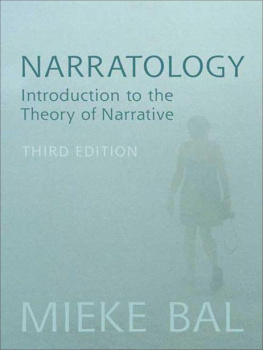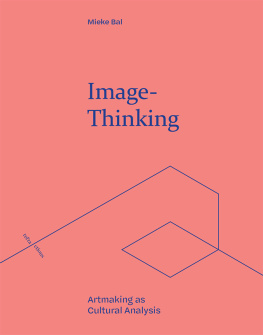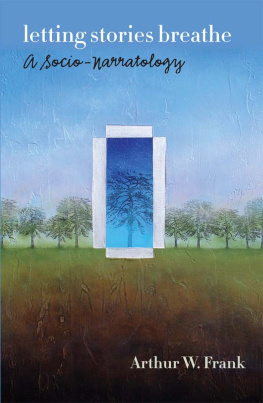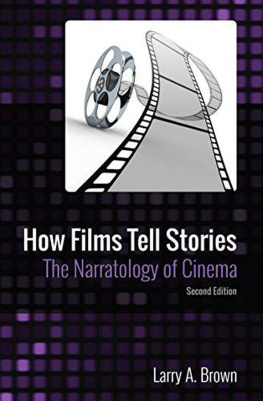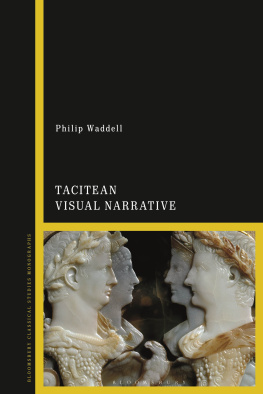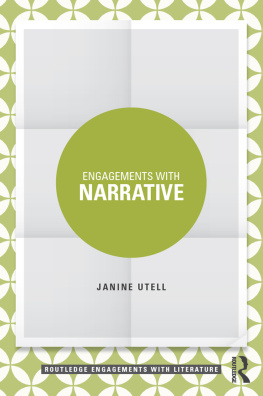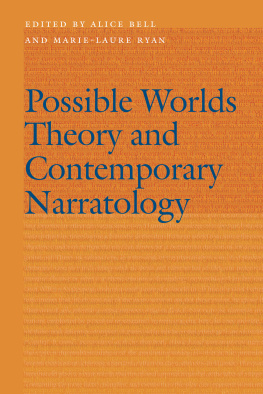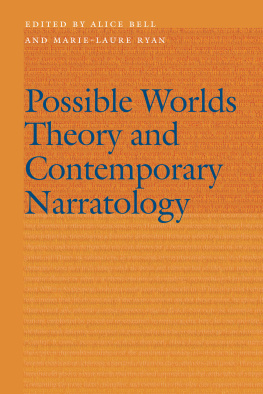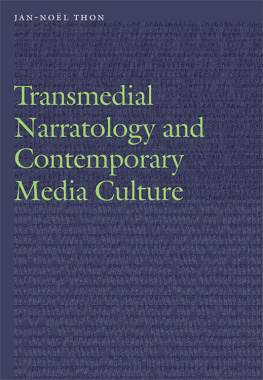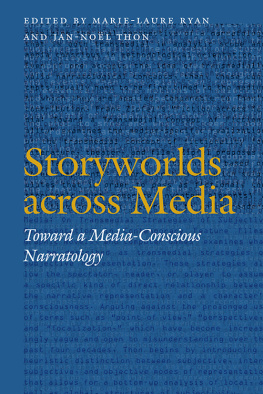NARRATOLOGY
Introduction to the Theory of Narrative
Third Edition
Since its first publication in English in 1985, Mieke Bals Narratology has become the international classic introduction to the theory of narrative texts. Narratology is a systematic account of narrative techniques and methods, and their transmission and reception, in which Bal distils years of study of the ways in which we understand both literary and non-literary works.
In this third edition, Bal updates the book to include more analysis of film narratives while also sharpening and tightening her language to make it the most readable and student-friendly edition to date. Bal also introduces new sections that treat and clarify several modernist texts that pose narratological challenges. With changes prompted by ten years of feedback from scholars and teachers, Narratology remains the most important contribution to the study of the way narratives work, are formed, and are received.
MIEKE BAL is Academy Professor of the Royal Netherlands Academy of Arts and Sciences. Her website is at www.miekebal.org.
Narratology
Introduction to the Theory of Narrative
Third Edition
MIEKE BAL

University of Toronto Press Incorporated 1985, 1997, 2009
Toronto Buffalo London
www.utpublishing.com
Printed in Canada
ISBN 978-0-8020-9687-6 (cloth)
ISBN 978-0-8020-9631-9 (paper)
First edition 1985
Reprinted 1988, 1992, 1994
Second edition 1997
Reprinted 1999, 2002, 2004, 2006, 2007
Third edition 2009
This third edition is a complete revision of Narratology: Introduction to the Theory of Narrative, which was a translation, revised for English-language readers, by Christine Van Boheemen, of the second, revised edition of De Theorie van vertellen en verhalen (Muiderberg: Coutinho 1980).

Printed on acid-free paper
Library and Archives Canada Cataloguing in Publication
Bal, Mieke, 1946
Narratology : introduction to the theory of narrative / Mieke Bal. 3rd ed.
Rev. ed. of: Narratology. 2nd ed.
Includes bibliographical references and index.
ISBN 978-0-8020-9687-6 (bound) ISBN 978-0-8020-9631-9 (pbk.)
1. Narration (Rhetoric). I. Title.
PN212.B313 2009 808.393 C2008-907728-8
University of Toronto Press acknowledges the financial assistance to its publishing program of the Canada Council for the Arts and the Ontario Arts Council.
University of Toronto Press acknowledges the financial support for its publishing activities of the Government of Canada through the Book Publishing Industry Development Program (BPIDP).
Contents
Preface to the First Edition
This introduction to narratology aims at presenting a systematic account of a theory of narrative for use in the study of literary and other narrative texts. It does not provide a survey of the major different trends in the field of narrative theory. There are other books available that provide such a survey. The choice for a systematic, hence limited, approach has been made for the sake of understanding, of the possibility of exchange of opinions, and of emancipation from intimidation. The choices I have made in this book were born from the conviction that a systematic account of one theory, which proceeds from definition, showing at every step its own structure and the necessity of its own phases, is easier for beginners in the field to understand than a plural survey of many different theories, involving names, terms, and, especially, heterogeneous arguments. For the same reason, names of predecessors have been reduced to the absolute minimum and, wherever possible, accounted for in special paragraphs at the ends of the chapters. The theory presented as a whole is also better accessible in the sense that whoever uses it will understand it the same way. This agreement of users has the advantage of a greater intersubjectivity. Teaching it becomes easier, learning it more feasible, because the risk of misunderstanding is reduced. Finally, the use of a method of analysis that every participant in a discussion can master helps students overcome the feeling of intimidation that a brilliant but unexpectedly structured interpretation by a teacher often entails. It is that feeling the feeling that the teacher, while conveying the desire to master literature, may at the same time, by the very brilliance of his or her per formance, intimidate that brought me to the development of the present account. Once I was able to use a theory, I noticed a progression in the quality of my interpretations as well as in my capacity to teach.
These remarks lead to an instrumental view of theory, indeed of this particular type of theory, provided the instrumental refers to the practice of learning and teaching, not to the relation between the text and the theory alone. Conceived as a set of tools, as a means to express and specify ones interpretative reactions to a text, the theory presented here holds no claim to certainty. It is not from a positivistic desire for absolute, empirical knowledge that this theory and its instrumental character should be considered to have been generated. It is, quite the opposite, conceived as it is because interpretation, although not abso lutely arbitrary since it does, or should, interact with a text, is in practice unlimited and free. Hence, I find, the need for a discourse that makes each interpretation expressible, accessible, communicable. Secondly, the tools proposed can be put to varied uses. I have myself used this theory for both aesthetic and political criticism, and found soon enough that these cannot, or should not, be separated. Hence, the need of more theory, beyond narratology: a theory that accounts for the functions and positions of texts of different backgrounds, genres, and historical periods. If the need for that broader kind of theory makes itself felt more acutely, narratology will have served its purpose just fine.
One need not adhere to structuralism as a philosophy in order to be able to use the concepts and views presented in this book. Neither does one need to feel that adherence to, for example, a deconstructionist, Marxist, or feminist view of literature hinders the use of this book. I happen to use it myself for feminist criticism, and feel that it helps to make that approach the more convincing, because of the features a systematic account entails. The scope of narratology, in my view an indispensable tool, is a limited one.
The examples given are various. They come from different linguistic communities, including Dutch, my native language. Many Dutch examples have been replaced by others from more accessible literatures. A few, however, have been kept; they are provided with a short bibliographical note at the end of the book. Examples are drawn from differ ent levels of aesthetic elaboration; not only from well-known literary novels but also from works of childrens fiction and journalism; there are even fictitious examples. The latter form a kind of series.
The date of appearance of this book qualifies its place in the discussion of literary studies. It comes late, if one considers it a result of struc turalism. Coming after the vogue of anti- or poststructuralist theoretical works, it aims at an integration of different types of theories, at showing the necessity of a rational critical discourse within whatever view of literature one may hold, and at pursuing steadily the study of narrative as a genre, which stretches far beyond literature in the narrow, aesthetic sense.
Next page
